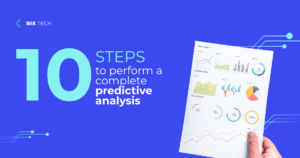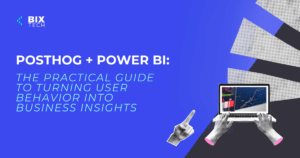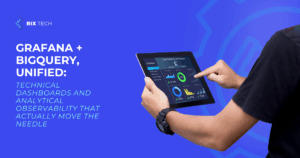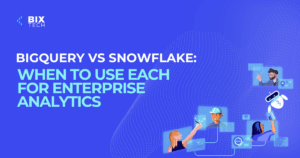9 Powerful GenAI Applications Revolutionizing Real-World Business Challenges

Sales Development Representative and excited about connecting people
Generative AI (GenAI) is moving at lightning speed—so fast, in fact, that what we define as "productivity" is being reimagined in real time. For instance, LILT’s AI platform can translate at a staggering pace of 150,000 words per minute across multiple languages, dwarfing the average human translator’s daily output of just 2,500 words. To put that into perspective, one AI-powered translation assistant can accomplish the work of 60 people in a single day.
But translation is just the tip of the iceberg. Consider TurboTax, which leverages GenAI to streamline tax returns for over 40 million users annually. Not only does the AI accelerate the process, but it also uncovers deductions, applies complex rules, and identifies credits most people miss—offering the efficiency and accuracy of 145,000 human tax preparers, all while reducing headaches for users.
In this article, we’ll explore nine transformative GenAI use cases already making a measurable difference in diverse industries. Along the way, you'll discover practical examples, business-focused case studies, and actionable tips for integrating GenAI into your own operations.
Understanding GenAI vs. LLMs: Not All AI Is Created Equal
Before diving into use cases, it’s important to clarify a common misconception: Generative AI and Large Language Models (LLMs) are related, but they’re not the same thing.
GenAI refers to the broader class of AI models designed to create new content—be it text, images, code, audio, or even business decisions. You interact with them using natural language, and they generate output based on patterns learned from vast data sets.
LLMs, like GPT-4 or Gemini, are a specialized subset of GenAI focused exclusively on understanding and generating language. While all LLMs are GenAI, not all GenAI models are LLMs; some are tailored for images, music, or different content types.
Key distinctions:
- GenAI: Broad content generation (text, images, code, etc.)
- LLMs: Specialized in text and language tasks
> Actionable Takeaway:
> When considering GenAI for your business, identify whether your needs are language-based (LLMs), visual (image generation), or another domain. This clarity will help you choose the right tools and partners for your goals.
If you’re interested in a deeper dive, check out our comprehensive guide to language models and their business applications.
1. Streamlining Operations and Security with GenAI
GenAI can function like an invisible operations manager, quietly ensuring that your workflows and data remain clean and efficient. For example, it can automatically scan for errors, rogue entries, and inefficient processes, acting much like a self-cleaning oven for your business systems.
A compelling case comes from the banking sector, where developers were spending up to 80% of their time managing security alerts rather than building new features. By implementing a GenAI platform, the bank translated complex security regulations into actionable controls—filtering thousands of false alerts and reducing the daily workload to under 10 actionable items.
Actionable Takeaways:
- Identify repetitive, data-heavy processes ripe for automation.
- Use GenAI to translate regulatory requirements into concrete workflows.
- Embed AI into your development or security cycle for real-time, intelligent triage.
For more on how AI is transforming software development and operations, explore AI-driven innovations in software development.
2. Elevating Data Quality and Governance
GenAI is a game changer for data management. Beyond content generation, it can organize, label, and enforce structure in sprawling datasets—ensuring your data remains clean, reliable, and compliant.
Case Study:
An e-commerce and payments company faced ballooning infrastructure costs due to inefficient data classification. By deploying a hierarchical classification model using GenAI, the team reduced their processing costs from $30,000 to $300 per million classifications and improved response times from 40 seconds to just 1.5 seconds. Accuracy for tax classification shot up to 95%.
=Actionable Takeaways:
- Leverage GenAI for automatic data labeling, flagging, and routing.
- Implement hierarchical classification to streamline complex workflows.
- Monitor and optimize AI models regularly to maintain data integrity.
3. Unlocking Insights from Unstructured Data
Every organization is sitting on a goldmine of unstructured data—think emails, support tickets, Slack messages, and PDFs. GenAI can sift through this chaos and surface answers in seconds using vector search, which finds information based on meaning rather than exact keywords.
Industry Example:
Bayer developed E.L.Y., a GenAI-powered assistant trained on 160 years of proprietary agricultural data. Over 1,500 frontline employees now save up to 4 hours a week by getting instant, accurate answers to complex questions. E.L.Y. outperformed ChatGPT in accuracy by 40%, resulting in smarter decisions and improved profitability.
In high-stakes environments like manufacturing or energy, GenAI can process sensor data and maintenance logs to predict equipment failures before they happen, shifting organizations from reactive troubleshooting to proactive planning.
Actionable Takeaways:
- Use GenAI-powered search to make unstructured business knowledge instantly accessible.
- Train AI assistants on proprietary datasets for industry-specific insights.
- Transition from reactive support to proactive guidance.
To see how AI is revolutionizing data handling, visit how data science is transforming business.
4. Enhancing Customer Experience at Scale
GenAI is redefining customer service. AI-powered chatbots and virtual assistants provide instant, 24/7 support—handling thousands of customer inquiries simultaneously without getting tired, flustered, or making mistakes.
Practical Example:
A leading e-commerce company implemented GenAI chatbots to handle common customer questions, which reduced average response times from hours to less than a minute and freed up human agents to focus on complex cases.
Additionally, GenAI can analyze feedback, rewrite sensitive messages, and ensure every interaction is consistent and on-brand.
Actionable Takeaways:
- Deploy GenAI-powered chatbots for high-volume, round-the-clock support.
- Use AI to analyze customer sentiment and optimize your product offerings.
- Automate repetitive support tasks, allowing human agents to tackle higher-value work.
5. Accelerating Compliance and Risk Management
GenAI automates the heavy lifting in compliance—such as scanning contracts, policies, and operational data for risks or regulatory issues. By instantly flagging anomalies or missing documentation, organizations can avoid costly fines and reputational damage.
Real-World Scenario:
A financial services firm used GenAI to automate compliance checks, reducing manual review time by 75% and uncovering risks that would have otherwise slipped through the cracks.
Actionable Takeaways:
- Integrate GenAI into compliance workflows to automate document review.
- Use AI to monitor transactions and flag suspicious activities in real time.
- Maintain up-to-date regulatory mapping by training GenAI on the latest laws.
6. Personalizing Marketing and Sales at Scale
GenAI can analyze customer behaviors and preferences, generating hyper-personalized product recommendations and campaign content. This leads to better engagement, higher conversion rates, and increased loyalty.
Case Study:
A retail company implemented GenAI-driven recommendation engines, resulting in a 25% boost in online sales and improved customer satisfaction.
Actionable Takeaways:
- Use GenAI to segment audiences and tailor marketing messages.
- Automatically generate personalized product recommendations.
- Continuously refine campaigns based on real-time customer data.
7. Revolutionizing Product Development
From generating design concepts to accelerating prototyping, GenAI is transforming how products are developed. AI-driven tools can suggest design improvements, simulate user experiences, and even automate code generation.
Example:
A software company used GenAI to automatically generate code snippets and UI mockups, reducing development cycles by 30% and allowing teams to focus on innovation.
Actionable Takeaways:
- Integrate GenAI tools into your product design and development workflow.
- Use AI to automate repetitive coding or design tasks.
- Rapidly test and iterate on new ideas using AI-generated prototypes.
8. Transforming Human Resources and Talent Management
GenAI is helping HR teams streamline recruitment, onboarding, and employee engagement. AI-driven platforms can screen resumes, analyze employee sentiment, and recommend personalized learning paths.
Industry Example:
A tech company deployed GenAI for resume screening and initial interviews, cutting time-to-hire by 50% and improving the quality of new hires.
Actionable Takeaways:
- Automate initial candidate screening with GenAI.
- Use AI to monitor employee sentiment and engagement.
- Personalize training and development programs based on employee needs.
For a closer look at how data and AI are reshaping HR, explore BI in human resources management.
9. Enabling Predictive Maintenance and Operational Uptime
GenAI can process data from sensors, maintenance logs, and operational systems to predict equipment failures before they occur. This minimizes downtime, extends asset life, and reduces maintenance costs.
Case in Point:
A manufacturing company implemented GenAI-based predictive maintenance, reducing unplanned downtime by 40% and saving millions in repair costs.
Actionable Takeaways:
- Integrate GenAI with IoT sensors for real-time equipment monitoring.
- Use predictive models to schedule maintenance proactively.
- Analyze historical data to uncover patterns and optimize asset utilization.
Conclusion: Making GenAI Work for Your Business
GenAI is already reshaping the way organizations operate, from streamlining workflows and enhancing data governance to delivering personalized customer experiences and driving predictive insights. The key to unlocking real business value lies in moving beyond flashy demos—embedding GenAI into core business functions with the right data, integration, and oversight.
Final Action Steps:
- Start with a clear business challenge and identify the GenAI use case that addresses it.
- Pilot AI initiatives in high-impact, data-rich areas.
- Measure results, refine your approach, and scale successful models throughout the organization.
Ready to take your business to the next level with GenAI? Discover more about exploring AI proofs-of-concept in business or contact us for tailored guidance on your AI journey.
Click the banner bellow and take the first step to embrace GenAI now, and position your company at the forefront of innovation and efficiency.









